|
May 18, 2021 by Sophia Kaercher The last day in Curacao started with an early wake up call for our third and final Covid test at 7:00 a.m. After we all got our noses swabbed, we went straight to the last dive site at Snake Bay. Since my dive gear was drying, I decided to sit out the last dive and watch my friends enjoy their last dive of the trip. I relaxed on the beach and enjoyed some quiet time. It was nice to have a relaxing moment after all of the awesome activities that we had already done on this trip. After the dive, we stopped to see some flamingos and then headed back to Carmabi to grab some food and to refuel on energy for the rest of the day. For our last day, we went on a tour of Curacao and saw some of the well-known spots that people visit. We first tried to see a lagoon where sea turtles were known to congregate, but we were unfortunately turned away by the police because of some of the Covid restrictions that are still in place here. Of course, today is the last day of restrictions as well as our last day here. Even though we didn’t get to see any turtles, we got back into the vehicles and went to the blowhole on the edge of the island. We got all kinds of pictures and saw the sea water shooting up through this small blowhole. It was pretty awesome. Then, we went on an hour hike to do some snorkeling in a secluded bay where there was a great colony of Acropora palmata. The water looked beautiful and a few of us suffered mosquito attacks. The tour around Curacao was an awesome way to end our adventurous trip. Know we are all back at Carmabi and we are getting ready to have a trivia night with the dive shop next door!
This trip has been one of my absolute favorites that I have ever been on. I felt like I learned so much about scientific diving and marine research on this trip and I can’t wait to put it to use. Dr. Begin and the TA’s have been an awesome source of information, and I feel lucky to have been able to experience this adventure. As we are getting all packed up and ready to go home, I have mixed emotions. I feel happy that I experienced this trip, but I’m sad to say goodbye to all of the friends I made and the beautiful island of Curacao.
0 Comments
May 17, 2021 by Ryan Shelby and Caleb May 17, 2021 7:30 AM, we loaded into the vehicles for our final dive to collect data for this research trip. It was bittersweet, bitter because the blisters really did not want to do another dive and sweet because now that it’s over, I can finally rest for a few minutes. The reef at Double Reef wasn’t the nicest we have seen this week and I have to wonder if the cruise ships that dock nearby have had anything to do with that. However, several species of fish and coral were observed living their best lives so it can’t be all bad. Urchins were not seen anywhere except for one on a single transect. A golden tail moray was the most interesting part of my dive. It peered out from its hole and I took some videos of it. I also saw some unusually large surgeonfish, which was interesting. A yellowheaded wrasse swam very close to me and it seemed like he was checking me out and I was able to get some great footage of the situation. 2:00 PM, we load into the trucks again, but this time we get to take a trip to town. Everyone was excited to see some part of the island that wasn’t a reef. Not that anyone on this trip dislikes coral reefs, but after eight days they all start to blur together. Several places were closed, and the locals seemed very excited to see some fresh faces around. One shop owner expressed how desperate all the local businesses are since the community is only just coming off of a lockdown. Overall, it was nice to just have a drink, this time at a place called Brown Lady, somewhere other than the normal Tomatoes by the CARMABI. I went to a restaurant and got a cheeseburger with a fried egg on it as well as a drink with blue curaçao. The floating bridge in Willemstad was very interesting and it made a few people a bit queasy at the same time. I liked Willemstad a lot, however I am still trying to find the lionfish store to buy a late Mother’s Day present. I did buy everyone in my family a hat though, which I am hopeful they will like. The greatest thing about today? No pain looms in the early light of dawn tomorrow…. oh wait, another covid test.  Photo by Abigail Vivlamore May 16, 2021 by Taylor Zook and Shane Cock-a-doodle-doo! A new day in paradise had begun. Today marked the last 3-dive day here in Curacao as we plan on visiting the city of Willemstad tomorrow afternoon. With that in mind, it was hard not to be a little emotional knowing our final dives here are approaching, however our gloominess quickly passes as soon as we stepped out of our rooms and into the perfect Curacao air. Ahhhh, ready for another great day of science!
Our first two dives of the day were at a place called Daaibooi, where fish surveying, photo transects, coral juvenile cover, and urchin population were the tasks at hand for the dive groups. Things got a little interesting, though, when a meter and a half long Southern Stingray decided to fly on by at about 20m. We had seen a ray before – a couple days ago – yet never this close for this long. Those animals are some of the most majestic looking marine animals there are in the ocean. The way they swim can really only be described as flying. Rays and Sea Turtles are the coolest looking creatures underwater solely based on the swim technique they use. Nevertheless, totally ecstatic to be able to witness that up close and personal. After a quick lunch, we headed to the Tugboat dive site to have a fun dive. No tasks, no transects, just some good ol’ fashion exploration. The sunken tugboat itself was very cool to see since I don’t think many of us had never dove a wreck before. Overall, it was a very relaxing dive and I’m glad we get to sprinkle in fun dives here and there. Tonight ends like every other night: a fresh daquiri in one hand and a beautiful sunset over the Caribbean Sea. This trip has been more than anyone could ever ask for and we feel incredibly lucky to have such a flawless group of people to experience it with us. Thank you Chantale, Boomer, Zoe, Abby, Sierra, and all of the other students here. we surely will never forget this trip. May 15, 2021 by Harlie Falzone and Kennedy We started off the day entering data into the computers, and then went diving at Playa Hundu where we did two dives in the afternoon. Today I, Harlie, did two fish surveys called RVC. This is where we hover in the water column, a few meters above the transect, for fifteen minutes covering a total of 15 meters. I cover the full 15 meters by positioning myself halfway between 0 and 15 meters and create an invisible cylinder, where fishes can swim in and out. i then record the fish species, size and how many I saw. I, Kennedy, followed Boomer as he laid down transects and then took photos of the benthos using a meter stick. Almost everyone saw at least one green moray eel which was awesome. Some people saw five different green moray eels in one dive. I wonder what makes them so prevalent at Playa Hundu. It was shocking and kind of freaky how fat and large they were. While seeing a lot of fish, I, Harlie, also saw Caleb get wrapped up in a transect tape which was quite interesting to watch. After coming back, we broke down all of our dive gear, washed it, and got ready for dinner. We also had a quiz on fish ID, where no one did as well as we thought...thankfully we had extra credit! Overall, it was a pretty good day!
May 14, 2021 Part 1 by Brianna Perino 6 AM alarm goes off, and once again an early morning wakeup call to begin our busy day in Curacao. After putting on my suit and grabbing my gear, I headed down those dreaded stairs to load my gear and eat breakfast with that beautiful ocean view. By 7AM (seriously I am so jealous of morning people) we were headed off to our first dive site of the day, Water factory. This was a loaded dive, lots was happening. This dive was not like our others, there was a photographer there to take our picture underwater. That may not seem hard but trying to get a group of 20 divers together to take a picture underwater is exponentially more difficult than on land. Factoring in the extra time and air spent, along with our data we needed to gather from our surveys there was so much to do in a 45 minute time span. After our photo at 20 ft underwater, which was quite the experience, we began to lay transects, or measuring tapes, for our data measurements. This was my first-time laying transects, and with a group of ten people watching me flower it out like I had never seen it done before, the embarrassment was real. But, as in life “ya live and ya learn.” Once the transects were laid properly, we began to collect our data using a fish biomass survey. This entails hovering couple meters above the transect at 7.5 and 22.5 feet and tracking fish species and density within a 15 meter circumference. That sounds simple but staying in one place for fifteen minutes under water looking out into the blue abyss makes its easy to lose track quickly! There are so many species that we have remember, that after the fourth day it all seemed to jumble in my head. But, one of the most important things is to remain calm and collected. Looking at all the species and realizing that I actually know what they are from all of my nights studying at the beach bar made me feel so accomplished and like I was a real scientist. Watching them dart in and out of the beautiful coral is unlike anything I have ever seen and could ever imagine. Each dive seems to get easier and more beautiful, Part 2 by Emily Carr In lieu of the infamous Advanced Coral Quiz scheduled tonight, Dr. Begin offered a more interactive testing strategy: an underwater scavenger hunt. We were given a list of eleven coral species to find and photograph, of which ten counted for points. The dive was at a new location offshore from an abandoned resort and featured an airplane crash. As we began the dive, camera in hand, we were met with another beautiful coral reef. Immediately we started pointing out species on our list and soon my buddy and I had snapped a pic of all but one. We looked at each other, confident in our 10/10 grade, but the 11/10 was enticing. With only fifteen minutes left in our dive we started scouring the reef for the last species, a digitate coral that looks like fingers reaching towards the surface. Right when we were about to turn back, we saw it! My buddy and I cheered with excitement, overjoyed that the long swim had been worth it. This style of quiz was a hit for everyone, with excited chatter starting as soon as our heads were out of the water. No test can ever beat this one! Oh, and the extra credit point doesn’t hurt either! Photo by Abigail Vivlamore
May 13, 2021 Part 2 by Savannah Rhoades Today was the first set of dives away from the research station! Yay! The dives at CARMABI were awesome but we were all really excited to get out and see more of the island. The first planned stop was too choppy and there were too many swimmers in the water, which was surprising for an island with such strict COVID rules. I assume someone, maybe the coast guard flying overhead, reported them. The real first dive spot was called Boka Sami, and it was pretty nice. I was in the urchin collection dive team. So it was our job to go along with 4 transects and count urchins. Two buddy partners were at 30 feet and the other two were at 45 feet. We switched depths for the second dive. I did the deeper, 45 foot, dive first and we saw no urchins, and we saw very little at 30 feet. This data was still useful as it gives us an idea that there may be a decrease in urchin populations or maybe urchins like different depths. This all could be used to plan a future research project. At the second dive site, the water factory, we only did one dive and we continued our urchin count. My buddy team was on the deeper transect line and once again no urchins. The surface was choppy and there was a current that made swimming just a little harder, good thing divers have fins and learn how to handle these situations. We managed to do the dive efficiently and effectively and everyone felt great after. This was definitely the most scenic dive as the reef seemed healthier and teemed with life. Once we came back to CARMABI we put our dive gear in the dive locker and all had about an hour to shower, study, or chill. Then we went to the restaurant nearby and enjoyed the scenery and enjoyed half-priced specials. I and a friend came back for a moment to do some studying and there was a big commotion outside. One of the local strays, who we all come to lovingly refer to as dingo, was attacking a rooster. I can’t say we all weren’t a little glad to have one less 2:00 AM caw to wake us up. It was interesting to watch and a funny experience that I’ll love to tell my friends about. Honestly, none of us know whether the rooster made it or if it’s just dead in the bush, but we will find out. Then we all went to dinner, which was sauerkraut and mashed potatoes with sausage and not to many people were digging it. So it had most of us returning to the little restaurant for a quick meal. After dinner, we had our nightly meeting and gathered our data into spreadsheets. Then some of us went to walk on the beach, some went to study, and some went to hang out in the upstairs area by the room. I chose to take the opportunity to study by the beach and enjoy the view of the moon and the sound of the waves. Overall, it was another great day in Curacao and I’m glad I was able to make it to the trip. Photo by Abigail Vivlamore
May 13, 2021 Julia Fedorova Today was the fourth day of diving, and the first day that we were able to venture outside of CARMABI. The first two dives of the day were done in Boka Sami, a small fishing village not far from the research station. The surface swim was a little challenging, as we had to swim quite a distance to reach the drop off, however it was well worth it. I saw many different types of coral, shrimp, and a giant lobster that was hiding under a rock. Today my group was in charge of laying down all of the transects at various depths, as well as taking photos of the benthos. Although taking photos is a challenging task that requires stellar buoyancy, I find it satisfying to analyze the photos back on the surface. The final dive took place at the Water Factory, which is the water desalination plant in Curacao. Curacao only gets 500mm of rain a year, which is the only source of freshwater on the island, causing a huge shortage of drinking water. So this plant uses reverse osmosis to desalinate seawater. The dive site was not off of a beach, so the entrance was precarious, but well worth it. The drop off to the reef started very close to shore and I was able to see hundred different types of coral as soon as I reached the start of the reef. This was definitely the most beautiful reef that we have been to so far. The corals were well established and abundant, covering the majority of the benthos. Additionally, the gorgonian population was so large that some sections of the reef looked like an underground forest. For this dive I ran the transects all around the reef, which was physically challenging, but I was able to see a large section of the reef. Overall, today was very interesting. We were able to finally visit some other sites and see the variations in the reef from one location to the next. Photos by Julia Fedorova and Abigail Vivlamore
May 11, 2021 by Lily Turner & Danielle Sphikas Today was our third full day in Curacao. We are dive buddies and roommates and have really enjoyed our time in Curacao so far! Our day started very early in the morning with a 7 am dive. During this dive, our group laid down three transects and did four 5x20 belt transects looking for Long Spine Sea Urchins. Unfortunately, most of our time was spent laying down and picking up transects; in the places we did have time to survey, we found no urchins. However, this was a good lesson for groups going after us and a different method was used from there on out. Following our first dive, we had to quickly dry off and head to our Covid-19 testing appointment. During the drive to the testing site, it was amazing to see a little bit more of the island. Due to COVID-19 restrictions, we have not been able to leave the research center, so we were both very excited to look around during the drive. Following the appointment, we went straight into a second dive. During this dive, we practiced doing photo transects. We both really enjoyed doing this surveying method and additionally think it is a great way to get accurate data because time is always of the essence while underwater. However, in order for this method to be effective, the pictures have to be good. We were not feeling very confident after our photo transect practice yesterday, but today we both were very proud of our technique and pictures! After this dive, we took a break for lunch. After lunch, we quickly got ready for our third dive. During this dive we did an experimental juvenile coral survey using quadrats. Using a random number generator between zero and thirty, we were given eight different points in the transect to place the quadrat on. Within these quadrats, we looked at how many juvenile coral there were. For each recruit, we observed the area around it and took notes about macro algae, sponges, direction, angle, etc.. This was our favorite dive so far because we were able to get really up and close and personal with the reef. We both saw so many things that we would not have seen otherwise; including a huge long spine sea urchin (which made up for the lack of them earlier in the day) and some beautiful fish that got very close to us while we were surveying (a squirrel fish and a massive male spotlight parrot fish). After finishing our dives, we did a bit of studying then headed to the beach bar to get Pina Coladas during Happy Hour. At the research center, there are a few friendly stray animals that we played with throughout the day, our favorite being a black and white cat. We did a bit more studying and then took the Fish ID Quiz. We did a briefing on tomorrow’s dives (which included leaving Carmabi for the first time!) then we prepped for tomorrow’s dives. Overall, today was a great day! We learned a lot and had fun doing it; we both look forward to all the rest of our days here in Curacao! Photos by Abigail Vivlamore, Danielle Sphikas and Lily Turner
May 11, 2021 by Mélanie Stamper The second day in Curacao started like the first: waking up three minutes before my alarm, fearing I would be late for the first dive of the day; getting brutally assaulted by mosquitoes while trying to butter my bagel in the kitchen; and drinking coffee by the shore while Table Cat eagerly waits for me to feed her. However, this was much different than the first day because today we had our first coral ID quiz, and it was all any of the students could talk about. At first, I felt confident about my abilities to identify the corals by pictures and description since I had taken Chantale’s Coral Reef Ecology class during the spring semester. But going underwater and physically looking at these corals, I knew my brain could barely distinguish Siderastrea siderea from Siderastrea radians when it had been the easiest corals in class to distinguish. And this doubt was definitely getting to me, but I brushed it off and waited for my group’s turn to go in the water to take the quiz. Once we were in the water, we swam over several colonies of coral that I could easily identify: Montastraea cavernosa, Diploria labyrinthiformis, Colpophyllia natans, Meandrina meandrites, and a handful more. I felt much better about my abilities and continued swimming until Chantale stopped swimming and pointed at me to begin my quiz. I. WAS. READY. Or so I thought. Right off the bat she asked to identify the genus of coral that I had the most trouble with: Siderastrea. I panicked. Is it radians? Or would be it siderea? I thought about it too much and choose whichever one made sense to me at the time, and I chose wrong. No big deal, I thought to myself, I still know a bunch of other corals. And yet, the ones I was most confident about Chantale did not ask me to identify. Isn’t it funny how things work out?  Figure 1: The culprit of my despair. Left: Siderastrea siderea. Right: Siderastrea radians.
May 10, 2021 by Ally Kilnap I woke up on my first morning in Curacao this morning not to the alarm I set yesterday evening, but to the call of the infamous CARMABI roosters, and I have to say that it felt very authentic. After all of the post-breakfast preparation and socialization we grouped together to go over the dive plans for our first day. Our main focus was to just gain an initial basis of maintaining buoyancy on the reef since this, for many of us including myself, is our first time diving in the ocean. We broke up into our dive groups and began our beach-entry dive. The ocean felt the same temperature as my showers at home so I decided to forgo my wet suit and sought to see how that would affect my buoyancy. As we began our decent I immediately realized that I was much more negatively buoyant without a wetsuit. Tomorrow I will be sure to lessen my weight. Still, I was able to dive comfortably in the beautiful reefs of Carmabi. It was truly full of life. Fish swarmed each mound of coral that shown in magnificent colors. I was even able to identify some of the species I had memorized on the plane! After the dive the whole group decided to head to the beach side bar, where I am now currently seated, sipping a pina colada and making some really awesome new friends. While I know it is only our first full day I know this is going to be the trip of a life time with amazing people and so much to learn. Photos by Abigail Vivlamore
|
AuthorsThe authors of this blog are students enrolled in Tropical Marine Ecology and Conservation, field courses run in the Caribbean by the University of South Florida. During these courses, students learn scientific diving techniques over a 10-14 day period and carry out research and monitoring of coral reefs at various sites. Many of these courses are done in partnership with local environmental organizations, like the Union Island Environmental Alliance and the Soufriere Marine Management Association. In this blog, students will document their activities and how they relate to course material. Archives
June 2023
Categories |

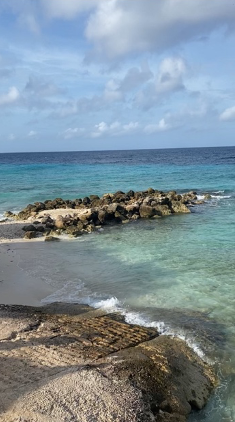

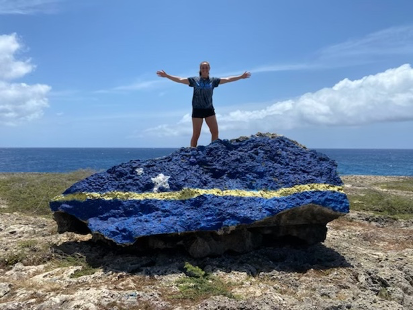




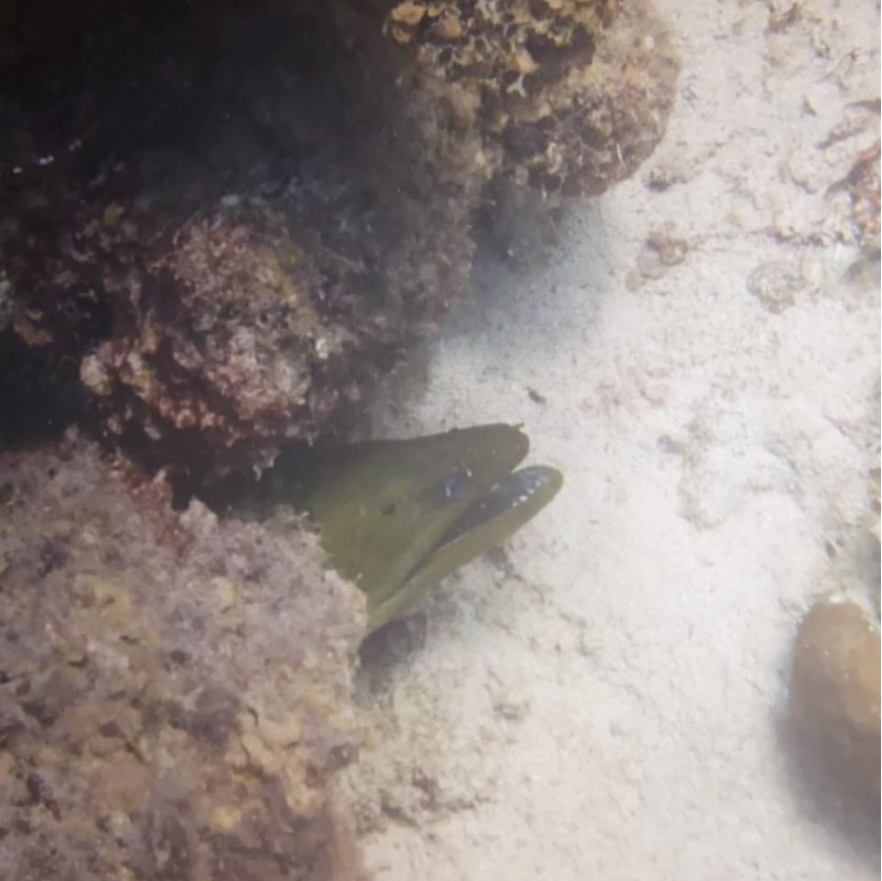
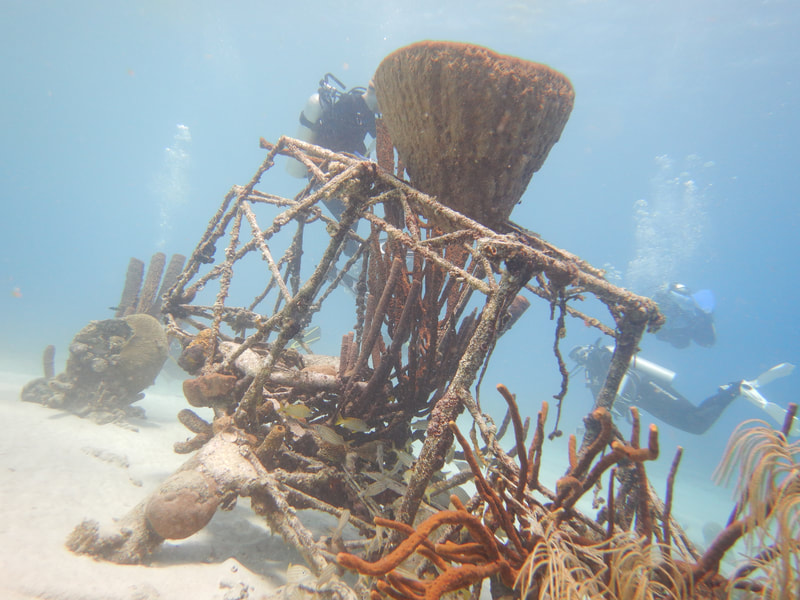



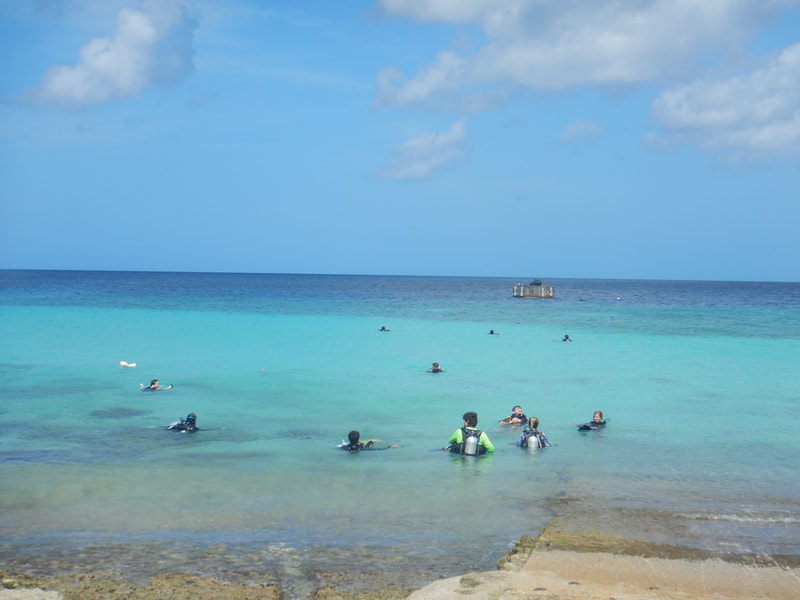




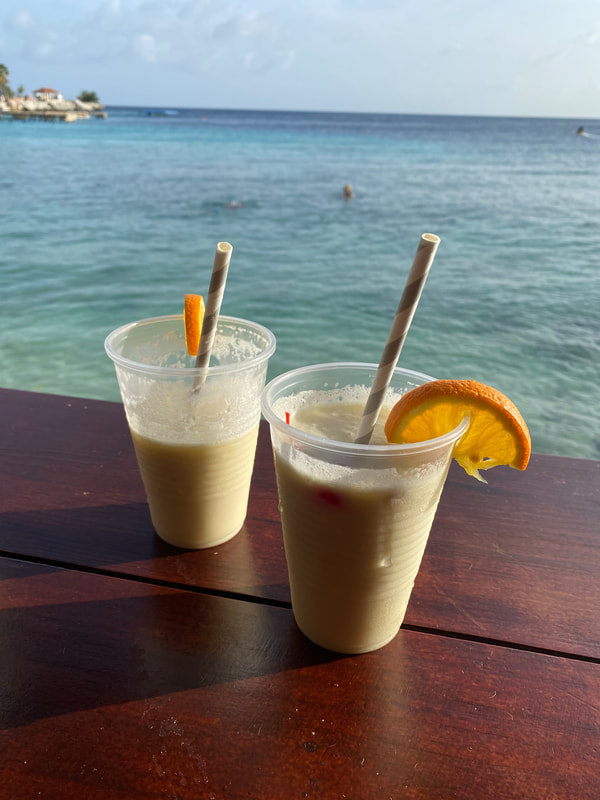
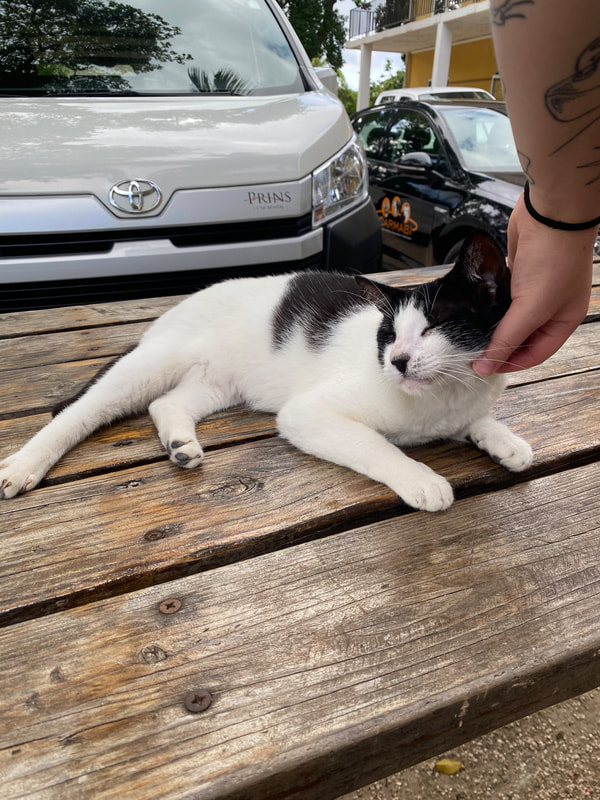
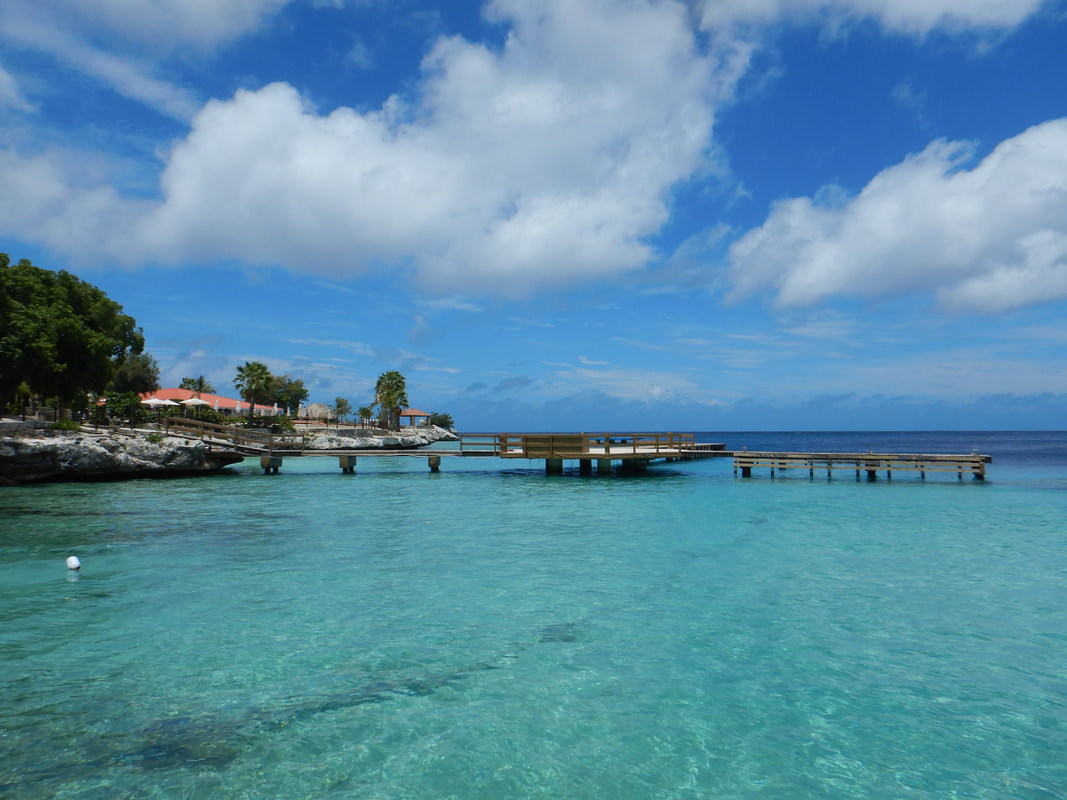
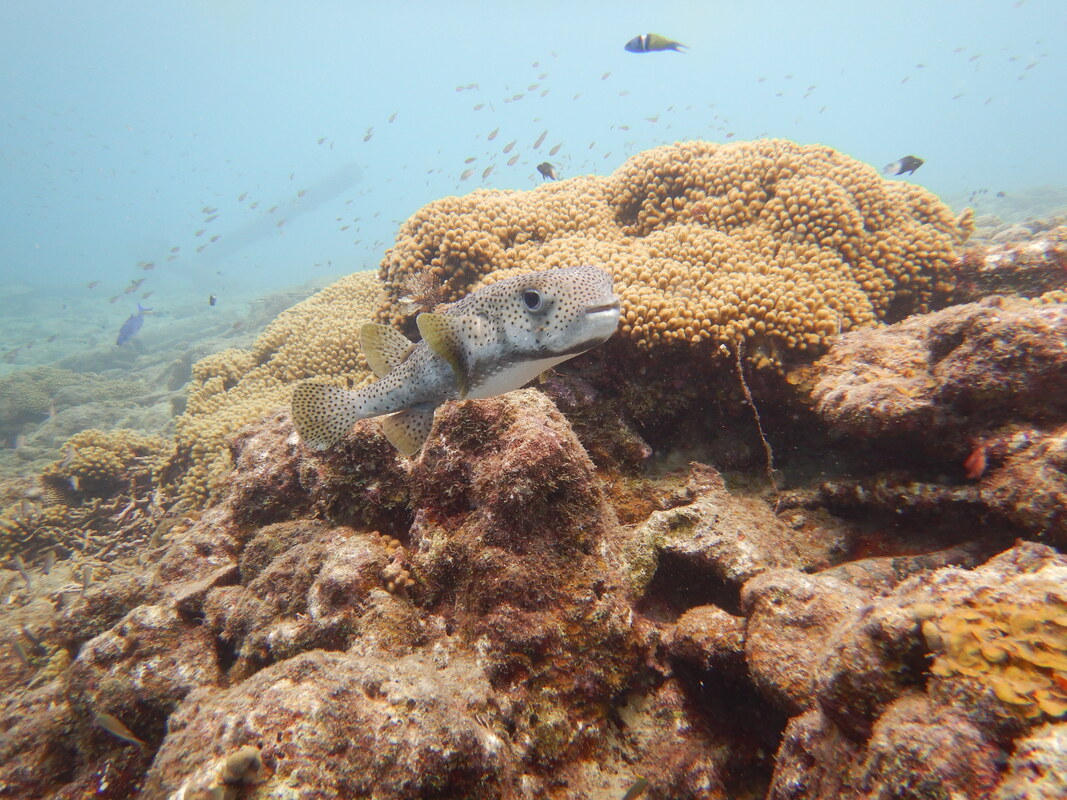
 RSS Feed
RSS Feed